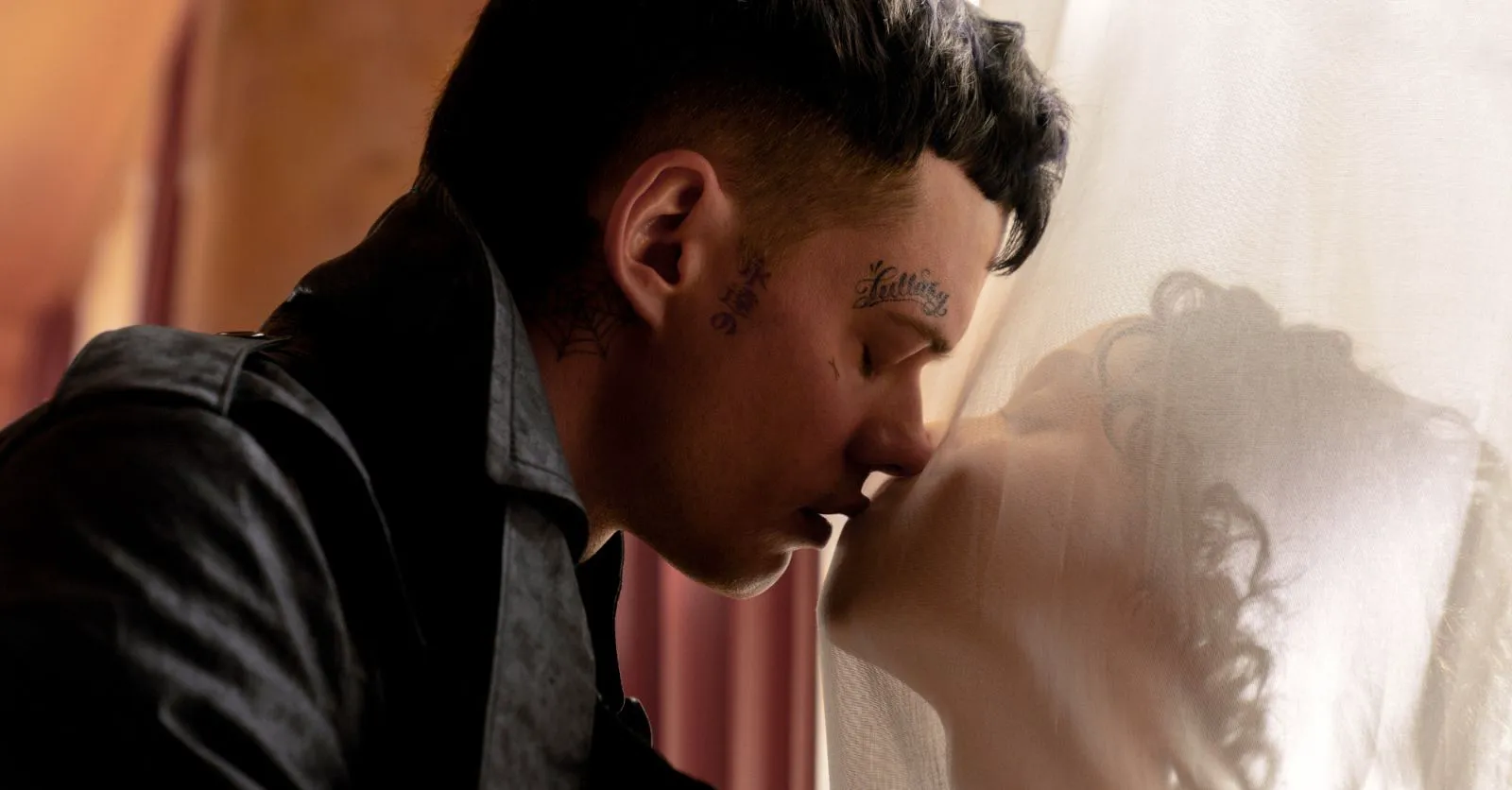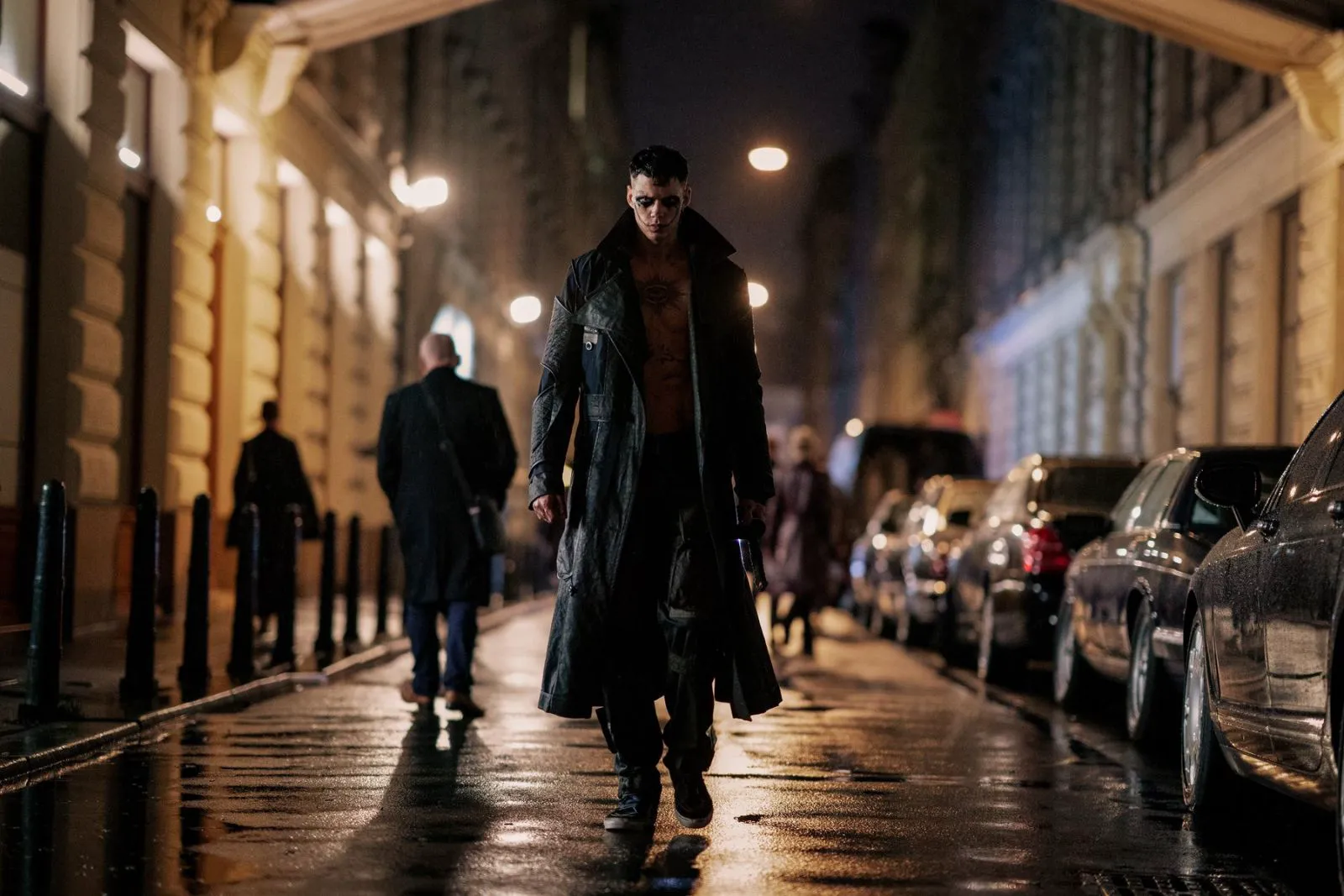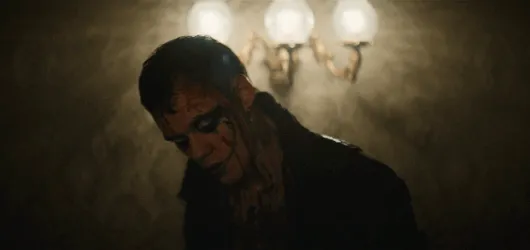Alex Proyas’ gothic thriller “The Crow” is a rare example of a successful Hollywood film where a reboot seemed like a rather unfortunate, albeit relevant, idea from the start. The accidental death of the lead actor, Brandon Lee, became both a curse and a gift for the film—unintentional symbolism fell into the hands of greedy corporations. Viewer engagement in the tragedy was skillfully monetized for an entire decade, yet each new installment of “The Crow” somehow managed to be worse than the last. By the time “The Crow: Wicked Prayer” was released in 2005, the inspiring story of love and revenge had completely turned to dust, and the cult status of the comic book was forgotten under the onslaught of real events.

Bill Skarsgård as Eric in a still from “The Crow”
However, just four years later, James O’Barr’s graphic novel was once again in the sights of film studios—this time for a full-fledged reboot of “The Crow” with an emphasis on realism, à la Christopher Nolan. At various times, Mark Wahlberg, Channing Tatum, Ryan Gosling, Bradley Cooper, and even Jason Momoa were considered for the role of Eric Draven. Momoa, by the way, came closest to “The Crow”—production with his participation, which started in 2016, was cut short mid-sentence, without clear explanations or reasons. Nevertheless, the Internet still remembers test shots of Momoa in the role of the main character. Six years later, it became clear that a new “Crow” would indeed happen: with Rupert Sanders (“Snow White and the Huntsman”) as director and Bill Skarsgård (“It”) as the protagonist.

Bill Skarsgård as Eric in a still from “The Crow”
The plot of the sixth film adaptation of “The Crow” only indirectly follows the original. The main characters—millennial non-conformists Eric (Skarsgård) and Shelly (Fka Twigs)—meet in rehab, where they work through childhood traumas and atone for youthful sins. The silent Eric quickly dissolves into the smiling Shelly—the two grow closer and run towards the unknown. Their love trip freezes on the threshold of a sinister reality: an influential man from Sherry’s past (Danny Huston) decides to get rid of the couple, but not himself, using bandits. The lovers die, but Eric manages to resurrect. Under the watchful eye of a crow—a guide between the worlds of the dead and the living—Eric sets out to find the offenders, whose murder can save Shelly’s soul from hellish torments.
The Reboot and the Backlash
Long before its actual release, “The Crow” was surrounded by an unreasonable level of hate, some of which was fueled by Alex Proyas himself, who sought to “strangle” any remakes in the bud. Many devoted fans of the original film adaptation also perceived the new version of “The Crow” as blasphemy and a mockery of the memory of the tragically deceased actor. These prejudices seem absolutely unfair in light of the fact that Rupert Sanders’ “The Crow” is not just another attempt to capitalize on the sacred image of Brandon Lee; on the contrary, it is a fresh look at a well-known story, skillfully adapted to modern realities. James O’Barr’s original comic book followed the popular sexist trope of “woman in refrigerator,” in which the heroine is sacrificed for the sake of developing the main plot. Proyas’ film adaptation largely inherited these traits—Eric Draven was turned into an eternal martyr, and the leitmotif of the film became revenge. Without changing the overall components, Sanders made a film of a completely different mood; his “Crow” is a dark, slightly sentimental tale about the immortal bonds of love and restless souls seeking peace.

Bill Skarsgård as Eric in a still from “The Crow”
Performances and Style
Bill Skarsgård and Fka Twigs—two people with extremely striking appearances—become the main driving force of the plot and, probably, its only reliable weapon in the fight against a wave of devastating criticism. Their mutual eccentricity, spontaneity, and amazing naturalness on screen help “The Crow” spread its wings and fly away from any comparisons with its heavyweight predecessor. As for the theme of revenge, Sanders stylistically turned out to be closer to the origins of the comic than Proyas. In rare moments of brutality, the new “Crow” demonstratively avoids firearms. Armed with a katana, Eric colorfully crushes skulls, breaks bones, and amputates limbs—in the best traditions of Hong Kong action films and “John Wick.” Realizing his helplessness in the face of Chad Stahelski’s witty fight choreography, Sanders stages a reckless bloody attraction and, oddly enough, wins.
Final Thoughts
For all its appeal, the new “Crow” is unlikely to escape the curse of Alex Proyas. Sanders’ film adaptation feels disjointed and contradictory, echoing long behind-the-scenes disputes and the film’s vulnerable creative policy, which Bill Skarsgård himself has repeatedly mentioned in interviews. Nevertheless, “The Crow” managed to dust off a semi-forgotten franchise without resorting to mimicry or flirting with nostalgic references, which in itself can be considered an achievement.